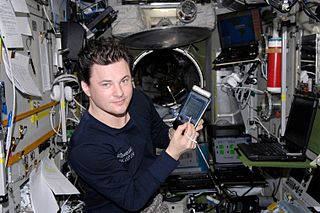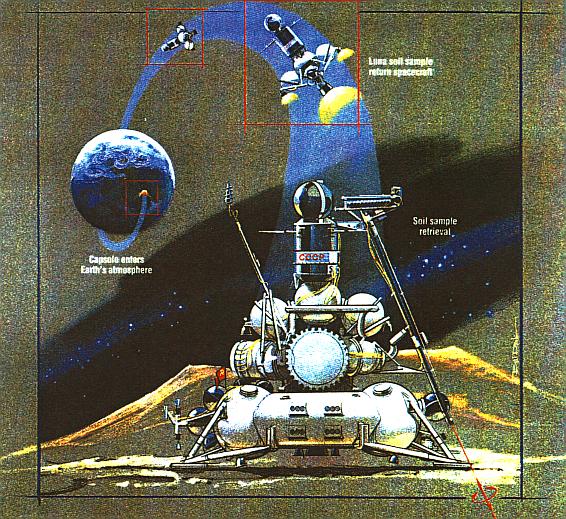If you are not already a subscriber, you are welcome to enter your email address here to sign up to receive the Space History newsletter on a daily basis. Under no circumstances will we release your legitimate email address entered here to outside persons or organizations, and it will only be used for mailing the specific information you have requested.
| Enter your email address here: |
Unsubscribe instructions are included in every newsletter issue in case you decide you no longer wish to receive it.
Note: We record the IP address from which subscriptions are entered to help prevent SPAM abuses.
Race To Space
Someone will win the prize...
... but at what cost?
Visit RaceToSpaceProject.com
to find out more!
1876
C. H. F. Peters discovered asteroid #165 Loreley.
1897
Born, Ralph Walter Graystone Wyckoff, Sr., American pioneer in x-ray crystallography
ref: en.wikipedia.org
1911
Born, William A Fowler, US nuclear/astro physicist (Nobel 1983 (prize shared with S. Chandrasekhar) "for his theoretical and experimental studies of the nuclear reactions of importance in the formation of the chemical elements in the universe")
ref: www.nobelprize.org
1916
H. Thiele discovered asteroid #3229.
1923
K. Reinmuth discovered asteroid #999 Zachia.
1924
Born, James Wayne Wood (at Paragould, Arkansas, USA), astronaut candidate, X-20 DynaSoar pilot (deceased)
ref: www.spacefacts.de
1936
C. Jackson discovered asteroids #1396 Outeniqua and #1397 Umtata.
1945
The US dropped a second atomic bomb "Fat Man" on Japan which destroyed part of Nagasaki. To date (2022), no other atomic weapons have been used in war on Earth.

Mushroom cloud resulting from the atom bomb dropped on Nagasaki 9 August 1945, rising 60,000 feet into the stratosphere
ref: en.wikipedia.org
1948
E. L. Johnson discovered asteroids #1623 Vivian, #1731 Smuts, #1819 Laputa, #1885 Herero and #2829.
1953
S. Arend discovered asteroid #1652 Herge.
1969
Died, Cecil Frank Powell, English physicist, discovered the pion (Nobel 1950 "for his development of the photographic method of studying nuclear processes and his discoveries regarding mesons made with this method")
Cecil Frank Powell (5 December 1903 - 9 August 1969) was an English physicist who studied steam condensation phenomenon, ions in gases, and atomic structure. His discovery of the pion led to a Nobel prize awarded in 1950.
ref: www.nobelprize.org
1969
USSR's Zond 7 probe took pictures of the Earth while enroute to the Moon.

Zond 7 photo of the Earth while en route to the Moon
Zond 7 was launched 7 August 1969 towards the Moon from a mother spacecraft (69-067B) on a mission of further studies of the Moon and circulmunar space, to obtain color photography of the Earth and the Moon from varying distances, and to flight test the spacecraft systems. It was the only completely successful L1 flight that could have returned cosmonauts alive or uninjured to Earth. Earth photos were obtained on 9 August 1969. On 11 August 1969, the spacecraft flew past the Moon at a distance of 1984.6 km and conducted two picture taking sessions. Zond 7 successfully accomplished a double-dip re-entry into the Earth's atmosphere on 14 August 1969, and achieved a soft landing 50 km from its aim point south of Kustani in the USSR.
ref: www.planetary.org
ref: nssdc.gsfc.nasa.gov
1970
Crimean Astrophysical Observatory discovered asteroid #2949 Kaverznev.
1971
Born, Roman Yuriyevich Romanenko (at Shchelkovo, Moscow, Russia), Colonel Russian AF, Russian cosmonaut (ISS 20/21, ISS 34/35; nearly 333d 11h in spaceflight), son of cosmonaut Yuri Romanenko

Cosmonaut Roman Romanenko, Expedition 20 flight engineer, NASA photo (27 August 2009)
Source: Wikipedia (spaceflight.nasa.gov killed 25 Feb 2021)
ref: en.wikipedia.org
1972
North American Rockwell received a NASA contract to construct the Space Shuttle.
ref: www.nasa.gov
1973 17:00:17 GMT
USSR launched the Mars 7 mission which ended up missing Mars when the lander separated early.
Mars 7 was one of an associated group of Soviet spacecraft, launched towards Mars in July and August of 1973, comprised of Mars 4, 5, 6, and 7. The Mars 7 interplanetary station was intended to be a Mars lander consisting of a flyby bus and a descent module. The descent module was designed to enter the Martian atmosphere and make in-situ studies of the atmosphere and surface, but a malfunction on board caused the lander to miss the planet.
Mars 7 successfully lifted off 9 August 1973 into an intermediate Earth orbit on a Proton SL-12/D-1-e booster, then was launched into a Mars transfer trajectory. Total fueled launch mass of the lander and bus was 3260 kg. After one course correction burn on 16 August 1973, it reached Mars on 9 March 1974. Due to a problem in the operation of one of the onboard systems (attitude control or retro-rockets) the landing probe separated prematurely (4 hours before encounter) and missed the planet by 1300 km. The early separation was probably due to a computer chip error which resulted in degradation of the systems during the trip to Mars. The intended landing site was 50 S, 28 W and landed mass would have been 635 kg. The lander and bus continued on into heliocentric orbits.
The Mars 7 Descent Module carried a panoramic telephotometer to image the Martian surface around the lander, atmospheric temperature, pressure, density, and wind sensors, an accelerometer to measure atmospheric density during the descent, a mass spectrometer to estimate atmospheric composition, a radio altimeter, an activation analysis experiment to study soil composition, and mechanical properties soil sensors. The flyby module contained a telephotometer to image Mars, a Lyman alpha sensor to search for hydrogen in the upper atmosphere, a magnetometer, an ion trap and narrow angle electrostatic plasma sensor to study the solar wind and its interaction with Mars, solar cosmic ray sensors, micrometeorite sensors, and a French-supplied solar radiometer to measure solar long-wavelength radio emissions. It was also equipped to perform a radio occultation experiment to profile the atmosphere and ionosphere.
ref: nssdc.gsfc.nasa.gov
1976 15:04:12 GMT
USSR launched Luna 24, the last of the Luna series, and the third Soviet mission to return Lunar samples to Earth.

Luna 24 mission profile, illustration courtesy of NASA
Source: NSSDCA Master Catalog
The last of the Luna series of spacecraft, Luna 24 was launched 9 August 1976 as the third Soviet mission to retrieve Lunar samples (the first two were returned by Luna 16 and 20). After entering an initial 115 x 115 km Lunar orbit with an inclination of 120 degrees, the probe landed in Mare Crisium (Sea of Crisis) at 12.75 N, 62.2 E on 18 August 1976. Using a sample arm and drill, the mission successfully collected 170.1 grams of Lunar samples and deposited them into a collection capsule. The capsule was launched from the Moon at 5:25 UT on 19 August and landed at 5:55 UT on 22 August in western Siberia, about 200 km southeast of the town of Surgut, where the samples were collected for scientific study.
See also Luna 24 Descent Craft
ref: nssdc.gsfc.nasa.gov
1978
L. and N. Chernykh discovered asteroids #2354 Lavrov, #2609 Kiril-Metodi, #2833 Radishchev and #3703.
1990
USSR Soyuz TM-9 landed at a pre-set area 72 km northeast of the city of Arkalyk, returning cosmonauts Solovyov and Balandin from their 179 day mission to Mir.
ref: nssdc.gsfc.nasa.gov
1996
Died, Sir Frank Whittle, Royal Air Force officer, inventor (turbine jet engine)
ref: en.wikipedia.org
2006
Died, James Van Allen, US physicist, space scientist, discovered the Van Allen radiation belts, instrumental in establishing the field of magnetospheric research in space
ref: en.wikipedia.org
2016
Died, Donald Milton Sorlie, American test pilot, flew the M2F1 & M2F2 lifting body predecessors of the Shuttle
ref: www.spacefacts.de
We are going to run out of oil!
Visit SpacePowerNow.org
to help fix the problem.
SpacePowerNow.org - For Human Survival
Please help support our efforts by shopping from our sponsors.
This newsletter and its contents are Copyright © 2006-2025 by The L5 Development Group. All rights reserved. - Publication, in part or in whole, requires previous written permission. - Academic or personal-use citations must refer to http://L5Development.com as their source. Thank you for your cooperation.
Space History Department
Resources
The L5 Development Group Home Page
The L5 Development Group Keyword Access System
Space History for August 9 /
Webmaster /
Script last modified August 23, 2018 @ 6:05 am
Copyright © 2006-2025 by The L5 Development Group. All rights reserved.
Hosted by FKEinternet






